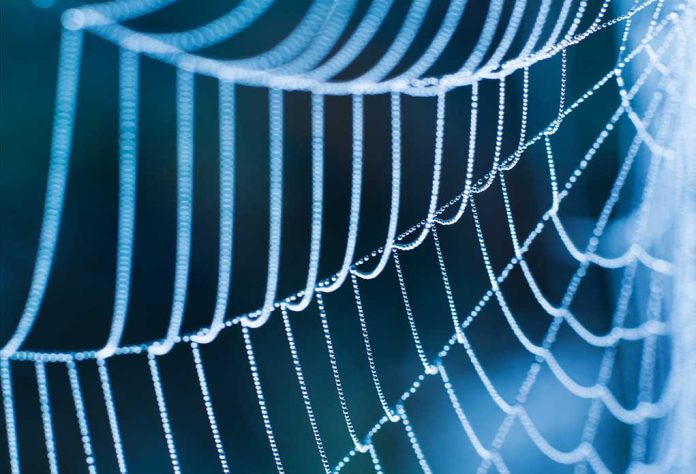
(DailyDig.com) – Large spiders are making their way across the eastern US, from Florida to Maryland. Research on the Joro spiders (Trichonephila clavate) predicts that they will show up in New Jersey and New York sometime soon, according to David Coyle, a professor at Clemson University.
The Joro spider, native to the eastern parts of Asia, has been known to grow as large as a human hand, spin large webs, and travel via a parachute-like formation spun from the web substance. The traveling by air activity only happens after the spider eggs hatch, and the baby spiders need to disperse from their nearly 400 siblings. They have been known to travel up to 100 miles from their birthplace.
The baby spider will send a strand of web to let the current pick it, and the “poppy seed-sized” baby to carry it on its way. A significant number of baby Joros do not survive the risky adventure.
Including the body and outstretched legs, most Joro spiders are the size between that of a nickel and possibly as big as a quarter, according to Coyle. He said that they may grow bigger at times, but they usually are not bigger than three inches.
The male and female Joro differ in that the males are smaller and typically brown. The female Joro is larger than the males, boasting bright yellow bodies adorned with blue or gray stripes.
According to a Rutgers University ecologist, José R. Ramírez-Garofalo, the Joro spider has spread rapidly throughout the Southeast, making its way up the coast. He referred to them as “gentle giants” because they are unlikely to bite humans or animals, as their fangs typically cannot penetrate the skin. He added that they tend to be very shy.
A retired arachnologist, Louis Sorkin, spoke to the press and said that the Joro is a docile spider and rarely threatens humans.
Coyle spoke of the spiders’ webs, which may span several feet across. They like their webs in open areas to catch their prey, mostly flies, cockroaches, wasps, and mosquitos.
Copyright 2024, DailyDig.com













